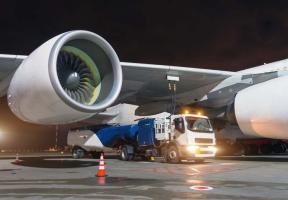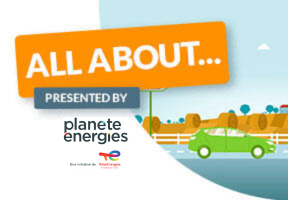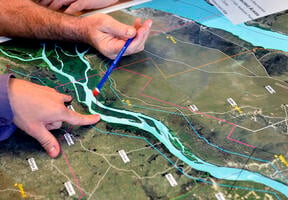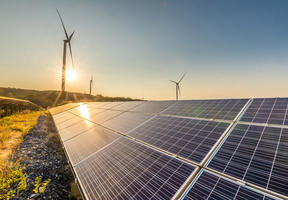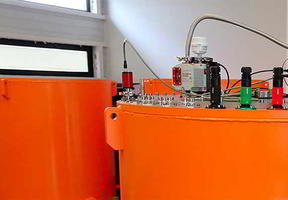How It Works: Air Conditioning
5 min read
Part of the air-to-air pump family, air conditioning units are refrigeration machines designed to lower the temperature of a room. Their popularity is increasing rapidly, particularly in Asia. As of 2017, there were 1.6 billion air conditioning units installed worldwide – and this figure is rising by an average of 135 million per year. Nearly 20% of the total consumed in buildings is used for air conditioning and ventilation.

© HOANG DINH NAM / AFP - A store selling air conditioners in Hanoi, Vietnam. Sales of air conditioners are rising rapidly in Asia.
Concept
Air conditioning works in much the same way as a refrigerator. Broadly speaking, each unit is made up of two exchangers: an evaporator, placed inside the room, and a condenser installed outdoors. A refrigerant, alternately in liquid or gas form, is made to circulate round a closed circuit connecting the two units by a motor-driven compressor. This movement can be broken down into five phases (see illustration).
- The compressor sends the refrigerant, as a gas, into the circuit at very high pressure (and therefore high temperature).
- As it arrives in the condenser, the gas releases some of its heat, which is discharged outside. It reverts to a liquid state.
- The pressure of the refrigerant, now liquid, decreases as it passes through the expansion valve and cools down.
- The cool, low-pressure liquid then arrives in the evaporator, absorbs the heat from the room and evaporates.
- The refrigerant as a low-pressure gas is sent back to the compressor and the cycle begins again.
How Air Conditioning Works
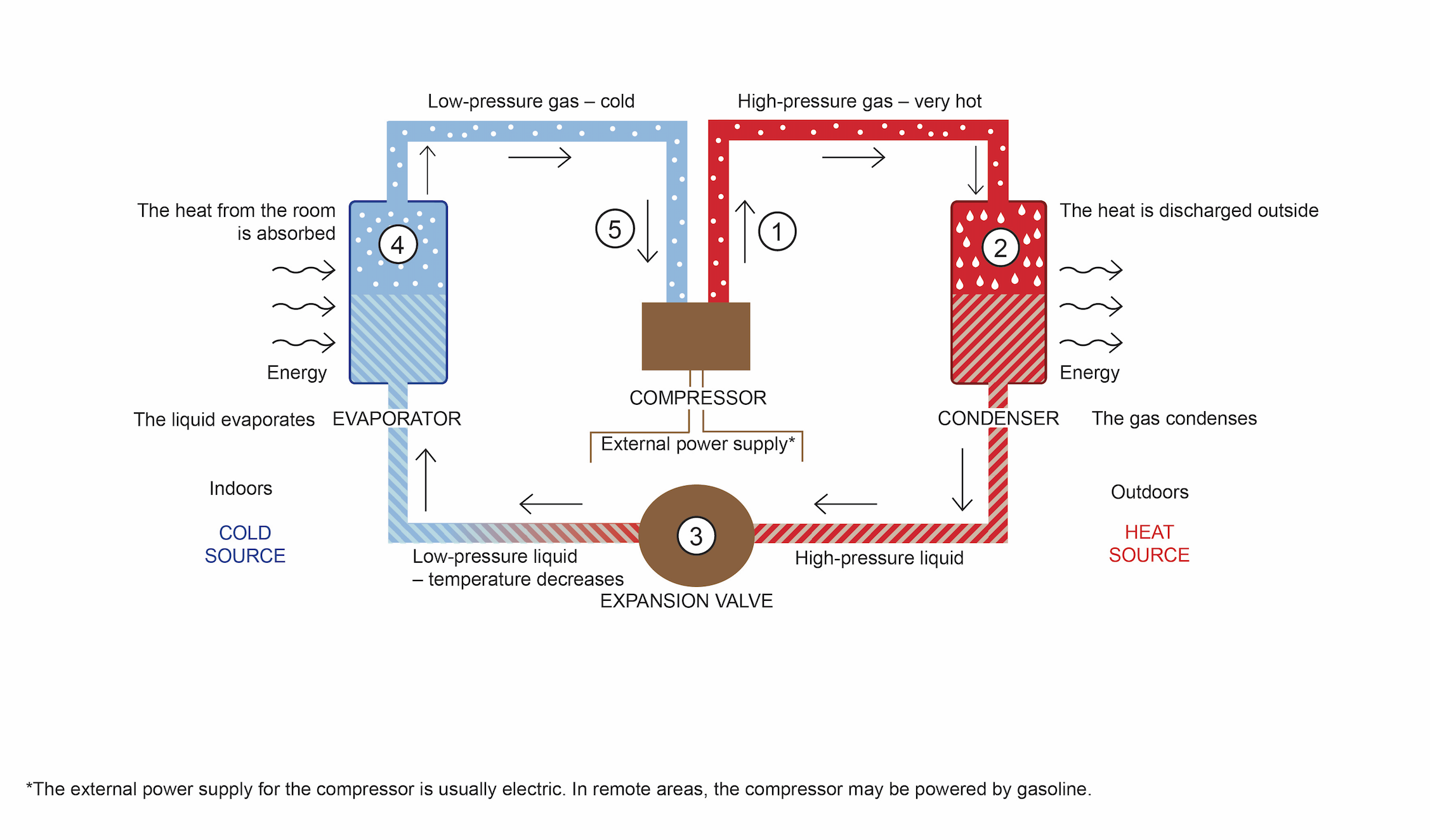
If the operating cycle is reversed, the system recovers energy outdoors and brings it inside, and is known as a . Some air conditioning units have this reverse functionality built in to provide additional heating in winter.
Air conditioning causes humidity in the room to condense, so this water then needs to be removed using a pipe leading outside.
Different Types of Air Conditioning
Monoblock Air Conditioners
As the name suggests, all the components of monoblock air conditioners are combined into a single unit placed inside the room. However, they also require a duct, usually made of plastic, to discharge the heat outside. This is why, in hot weather, some stores leave their doors ajar to let this duct out – which is not particularly conducive to good air conditioning. The units can be mounted on wheels, so are easy to move around, but only work for one room at a time. They are easy to install and affordable to buy, but noisy and not very effective.
Split Air Conditioners
These systems rely on a unit outside and one or more units indoors, all linked by flexible pipes. The compressor is installed outside, along with the condenser, which minimizes noise indoors. The outside unit should not be exposed to too much sunlight to ensure that the temperature of the fluid is significantly higher than the temperature of the air outdoors. It is also important to make sure that the compressor motor does not disturb the neighbors...
Split air conditioners with only one indoor unit are known as “mono-split” systems, while those with several indoor units (usually less than four) are “multi-split” and can cool multiple rooms.
An air conditioner’s is mainly measured by its energy efficiency rating (EER), which represents the ratio of the cooling capacity to the input required.This rating is displayed on the mandatory energy label for each model. The higher the rating, the more efficient the machine is.
According to the French Environment and Energy Management Agency (ADEME)3, low‑power air conditioners consume between 300 and 500 kilowatt-hours per year in electricity for 500 hours of operation in a closed room, representing a budget of between €40 and €70 in France. Even the most efficient air conditioners use more energy on average than refrigerators and freezers, which work all year round.
Central Air Conditioners
If installed when the house or building is being constructed, compressors can be more powerful or serve several homes. The indoor units may be linked by pipes hidden in the walls, in false ceilings or under the floors.
Water-Cooled Air Conditioners
Sometimes, in server rooms, labs, shopping malls and basement rooms, for example, it may not be possible to install an air condenser outside or even fit an exhaust duct. In this case, a water-cooled condensing unit must be added to the air conditioner and then linked up to the public water network and sewer system. These set-ups are known as “water-cooled air conditioners” and consume a non-negligible amount of water on top of electricity.
Different Types of Refrigerants
Refrigerants used in refrigerators and air conditioners are usually combinations of various molecules, designed to provide the most efficient performance depending on the intended usage.
Certain types of refrigerant are harmful to the ozone layer and have either been banned or made subject to strict regulations to ensure, in particular, that they are contained in closed circuits and recovered properly after use.
The various types of refrigerants include:
- Chlorofluorocarbons (CFCs) and hydrochlorofluorocarbons (HCFCs), which are harmful to the ozone layer and have been gradually banned since the Montreal Protocol was signed in 1987.
- Hydrofluorocarbons (HFCs), which exacerbate the
.
- Natural refrigerants, based on ammonia, propane, isobutane and even
, which have a negligible impact on the ozone layer and greenhouse effect and are now the refrigerants of choice in Europe.

